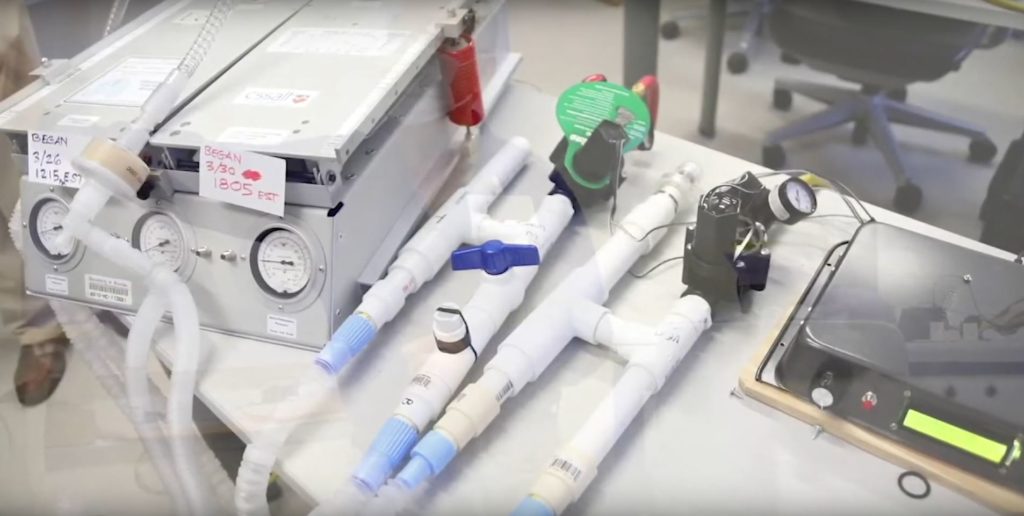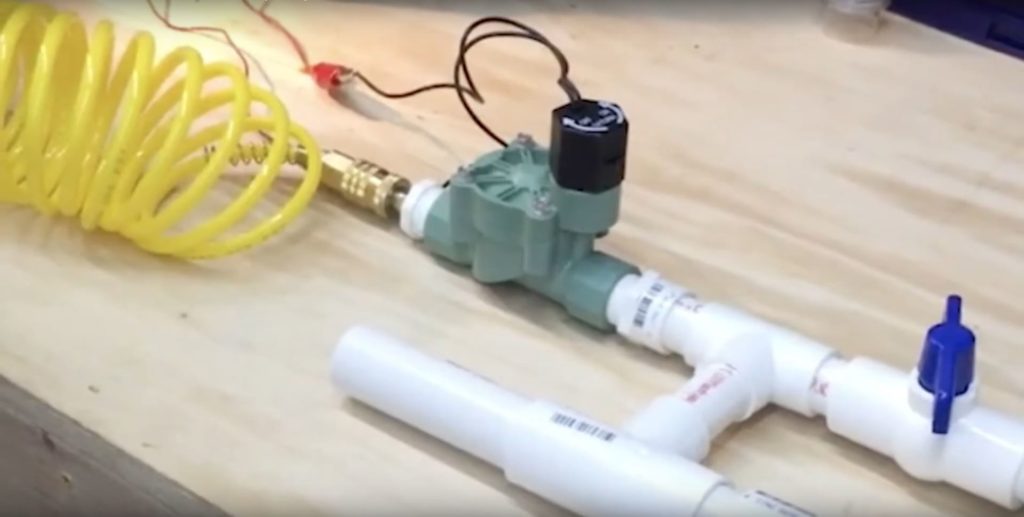PanVent Emergency Ventilator Created to Fill Urgent Need During COVID-19
How do you build 800K ventilators when parts aren’t available? Go to Home Depot
Dr. Samsun Lampotang, the Joachim S. Gravenstein Professor of anesthesiology and the director of the Center for Safety, Simulation and Advanced Learning Technologies (CSSALT) at the University of Florida, has spent his career engineering solutions to medical problems. At the start of 2020, Lampotang’s focus was on designing, building and validating mixed reality guided intervention simulators to train physicians and nurses in medical procedures without putting patients at risk.
But then COVID-19 changed all this.
“You have to think about where we were in mid-March. There were all these dire predictions that we would need one million ventilators in the U.S., never mind other countries,” explained Lampotang. “Anybody who can do that math can see we had a shortfall of maybe up to eight hundred thousand ventilators.”

As a UF graduate student, Lampotang had designed a transport ventilator with two colleagues specializing in respiratory therapy that was licensed to industry by UF Innovate | Tech Licensing and manufactured. His background and knowledge of the ventilator industry gave him the confidence to tackle this urgent ventilator shortage problem.
“We already knew in March that the components you need to build a ventilator were all bought out,” he said. “We were faced with essentially a design problem: How do you build eight hundred thousand ventilators when the supply chain has been depleted?”
Lampotang said he was compelled to solve this problem after hearing of the heartbreak doctors in Italy suffered when they had to prioritize which patients received their limited ventilators during their first wave in early March. Prioritization meant that some patients died without ventilators.
Lampotang’s intent wasn’t to compete with high-end ventilators – they just needed something that worked… and fast. So with help from colleague David Lizdas, he found the solution to their supply problem in their local hardware store. Although air-tight PVC water pipes, lawn-sprinkler valves, and Arduino microcontroller boards aren’t commonly used for medical devices, such parts – both plentiful and inexpensive – became the open-source ventilator they would name PanVentTM .
“How do we present a safe alternative to nothing?” Lampotang continued, knowing the need for ventilators and the patients who potentially would die if the hospitals didn’t have enough. Surely, a DIY ventilator made of parts from Home Depot was better than no ventilator, and so he got to work. “I think the core concept was finished in about two weeks.”
Lizdas assembled early prototypes in his garage guided by Lampotang over FaceTime. The duo eventually ran their design past the recently retired UF engineer and anesthesiologist, Dr. Gordon Gibby, who enthusiastically joined the effort. Once the team had refined their design, they reached out to Hera Lichtenbeld, assistant director and licensing officer at UF Innovate | Tech Licensing, to know what they needed to do next.
“They wanted to know if they were covered from a liability perspective,” Lichtenbeld said. “That’s where we determined they needed a disclaimer on their open-source ventilator blueprints.”
Lampotang had worked with UF Innovate before and praised the office’s straightforward approach to technology licensing: “There’s a very structured program and infrastructure to take an idea from invention to implementation, design, refinement, licensing and commercialization.”
But this invention brought Lampotang into the more unfamiliar ethical territory prompted by the urgent need for his device during the ongoing pandemic. He was thankful for the advice he received from UF Innovate’s legal team and UF ethicist, William (Bill) Allen, which prompted him to release his design open source under a disclaimer.
Lampotang remembered his quandary regarding the technology.
“Do I make the design publicly available or do I say, ‘You have to wait until engineering validation which included running PanVents non-stop for 3 weeks (how long some COVID-19 patients in Italy remained on ventilators) with no failure on calibrated test lungs is fully completed?’”
The ethical dilemma, he recalled, was that formal validation would only be completed AFTER April 12, 2020, the date local authorities were predicting for the surge in ventilator need. At that point in time, PanVents had been running without failure for more than a week but less than three weeks.
“Allen answered, ‘No, you can release it!’” Lampotang said.
Lichtenbeld later nominated this technology for UF Innovate’s Invention of the Year Award because the idea was timely, outside the box, and potentially life-saving for COVID-19 patients. She also praised the university’s decision to release the ventilator design as open source.
“UF decided early in March that any inventions to benefit COVID patients would be made freely available,” said Lichtenbeld.
Lampotang hopes that their open source, accessible ventilator design will save lives both stateside and abroad. The design has been shared internationally throughout countries in Africa and in Bangladesh, the latter of which has been dealing with the “double-whammy” of COVID-19 and a difficult cyclone season. After receiving feedback from international collaborators, Lampotang has also redesigned his ventilator using more globally-available parts and has published the open-source design in multiple languages so volunteers across the world who need to build ventilators can do so.

“Some countries in Africa have no ventilators. Zero,” Lampotang said. “The idea there was that we would empower those African countries or low-income countries to build their own ventilators and become comfortable with the technology.”
“You don’t have to be an engineer to make this,” Lichtenbeld said of the technology. “You can go to Home Depot, get the parts, and put it together based on the blueprints. It is really quite impressive how the team pulled such a design off in a couple of weeks.”
Lampotang’s team applied for a Design Emergency Use Authorization from the U.S. Food and Drug Administration, which would allow the ventilator to be used in U.S. hospitals when other options are exhausted. In addition to Lampotang, Gibby, and Lizdas, the PanVent™ team included Travis Johnson, Tony DeStephens, and Ilana Zarour of CSSALT; Spyros Svoronos, professor of chemical engineering; lecturer Sean Niemi and Noel Thomas of the Department of Mechanical and Aerospace Engineering; Michael Stapleton of the Department of Electrical and Computer Engineering; and Jennifer Nichols, assistant professor of biomedical engineering.
Written by Jenelle Patterson, a marketing volunteer at UF Innovate | Tech Licensing. Jenelle is a postdoctoral candidate in UF’s horticultural sciences department.
